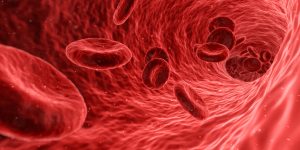
Unlike spider veins, varicose veins can be painful, and may come with more problems than just looking unsightly. They cause pain and swelling in the legs, and can make a standing job difficult. So where do they come from? And how can they be prevented?
Where do varicose veins come from?
Varicose veins form because a blood valve does not function properly. The muscles around your blood valves push blood back up to the heart, and the valves open and close to control the direction of the flow. If those valves malfunction, blood flows backwards into the vein, causing enlargement. Veins closer to the surface are more likely to become varicose, since they have less muscle support.
Another cause of varicose veins includes pressure on the legs and/or abdomen. Most commonly, this comes from pregnancy, obesity, chronic constipation, frequently standing for a long time (such as at work), and–in rare cases–tumors.
What is the difference between spider and varicose veins?
Spider and varicose veins, while similar, have a few fundamental differences. Varicose veins involve swelling, and are painful. You may also feel heaviness in your legs once varicose veins have formed.
Varicose veins are also potential sites for forming blood clots. Once you have varicose veins, you should monitor them carefully, keeping an eye out for signs of blood clots which can lead to DVT (deep vein thrombosis).
What is the treatment for varicose veins?
If you have developed varicose veins, your doctor will ask you about your symptoms and may examine your legs in different positions. They may also decide to do an ultrasound to test your blood flow, and for any other potential problems.
Rather than going through surgery, your doctor may also recommend lifestyle choices. These may include:
- Exercise to improve circulation
- Weight loss or dietary adjustments to maintain a certain weight
- Avoiding standing for long periods of time
- Compression socks
In the unlikely event that you will need to undergo surgery, it will be for veins that threaten your overall health. This could include inflammation, ulcers on your legs, and blood clots. In this case, you may receive vein ligation. This procedure involves removing the veins via small incisions. However, there are less invasive procedures available as medical science continues to progress. If your case requires surgery, be sure to ask about:
- Sclerotherapy: using an injection to block off a larger vein
- Microsclerotherapy: using an injection to block off smaller veins
- Laser surgery: light energy which blocks off a vein
- Endovenous ablation therapy: heat and radiofrequency waves which block off a vein
- Endoscopic vein surgery: using a small scope inserted through an incision to block off a vein
What will my life be like with varicose veins?
Even when you make lifestyle changes, varicose veins do get worse over time. However, in normal circumstances, they don’t cause long-term problems. Prevent varicose veins with exercise and weight loss to prevent them from turning your skin unsightly. If you have a standing job, be sure to ask about breaks for your health, or get a chair or stool to help you take the strain off your legs.
